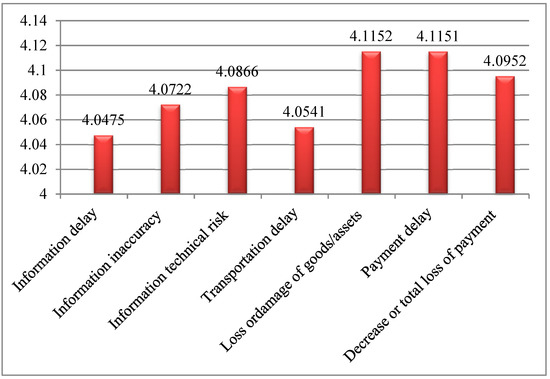In the global economy, container shipping has become the foundation of maritime conveyance and logistics systems
[1][2][1,2]. As they gain prominence in diverse areas, container shipping companies have to deal with uncertainties and interruptions. As recognized in the literature, “risk” has continuously been debated as a major impelling factor in maritime transportation
[3][4][3,4]. Risks associated with shipment management are classified as one of the leading possible accident risks in container docks, as stated by some port safety authorities such as Health and Safety Executive UK
[5] and Hong Kong Marine Department
[6]. In the case of Ethiopia, the Ethiopian Shipping and Logistics Service Enterprise (ESLSE) is an international shipping industry known for its volatility and high risks associated with its container shipping system
[7]. Many studies in risk management have gained attention in logistics risk in general and container operational risk in particular
[8][9][10][11][12][13][14][8,9,10,11,12,13,14]. However, they have not come to a common consensus on container operational risk dimensions
[11]. The extant literature shows that the lack of management commitment of the shipping company to container handling is a typical dimension for container operational risk
[15][16][17][15,16,17]. Drewry
[18] indicated that the risk factors related to container logistics operations dimensions could be categorized into seven themes: booking and invoicing errors, documentation, errors in customs regulatory compliance and security compliance, theft and cargo loss or damage, strikes and transport congestions, piracy, and terrorist attack. In their study, Fu et al.
[19] found that piracy has been a significant threat to container liners. It was also found by
[20][21][20,21] that the risk related to container operational risk such as ‘‘delay in information transmission by parties involved’’ and ‘‘delay in the processing of document by government authorities (e.g., customs)’’ had a significant adverse effect on Taiwan’s shipping industry. This present study concentrates on risks in container shipping operations but endeavors to contribute to the research in this field by exploring additional risk factors. To further enrich the contribution, the paper validates and ranks the dimensions of the identified risk factors that could serve as a platform for researchers interested in this field.
To successfully achieve container safety risk management, the shipping companies are responsible for understanding how to explore the container operational risk dimensions for risk management purposes and for knowing the dimensions of container operational risks for port operation. To better understand how best to explore the container operational risk dimensions for risk management, the first step is to understand the experts’ and port employees’ perspectives and perceptions of the container operational risk dimensions. Additionally, to help container shipping companies to differentiate among the risk factors, the risk factors will be ranked to reveal which risks factors would have a more serious impact than the others and which ones would be the most significant among all other risks factors. Experts’ and employees’ perspectives and perceptions of container operational risk factors could provide the information needed for container shipping companies and maritime managers to make better decisions regarding the risk factors for successful container operational risk management.


